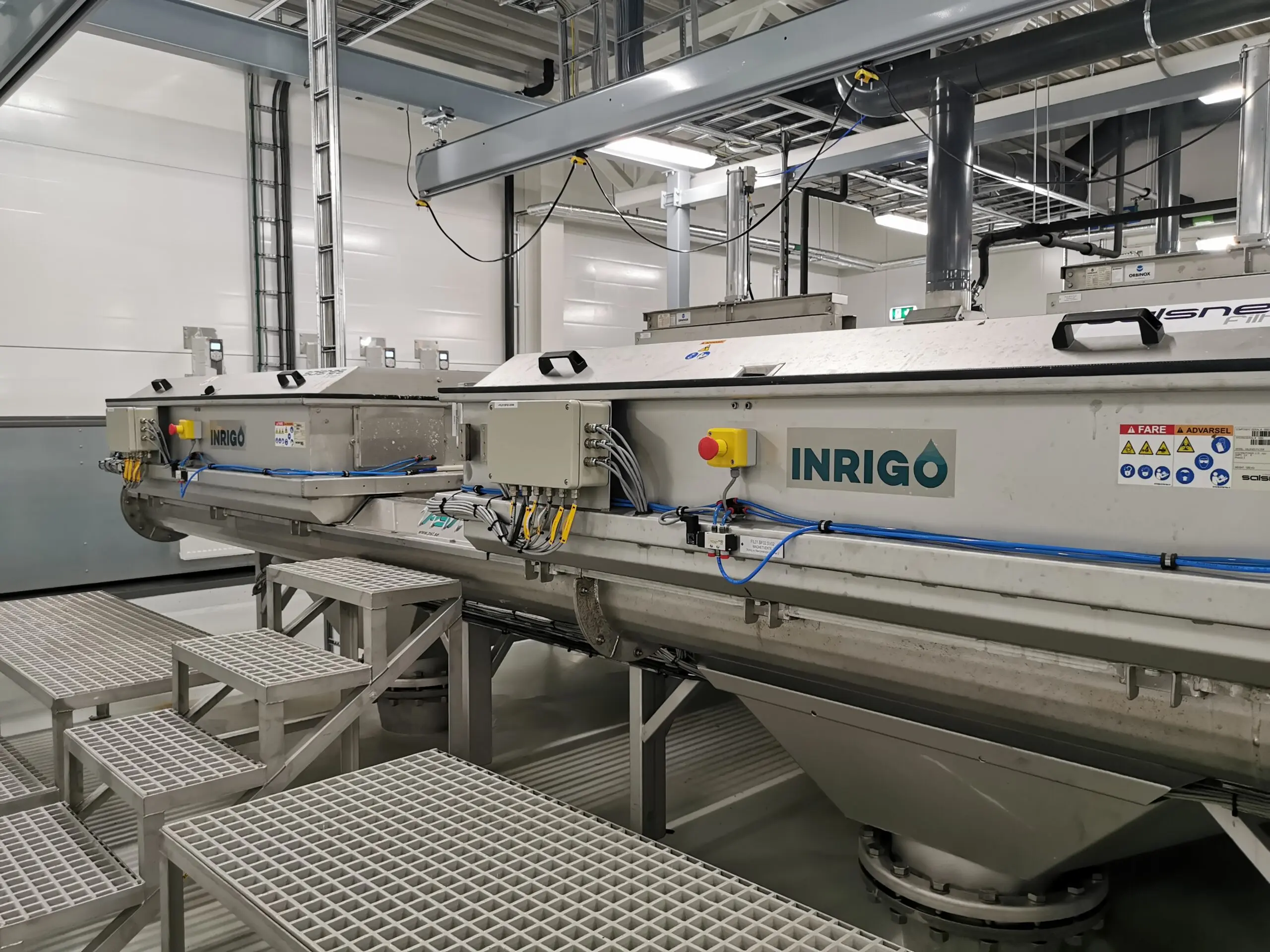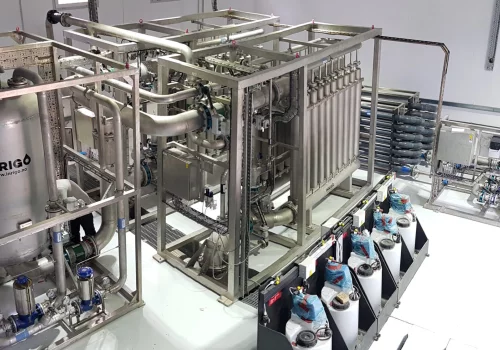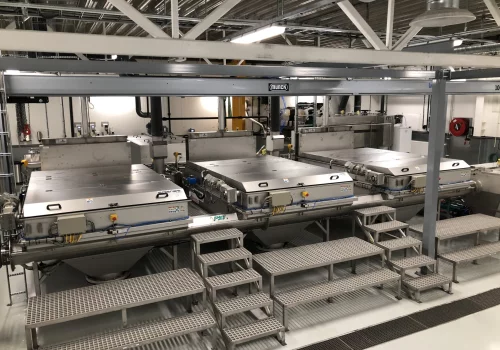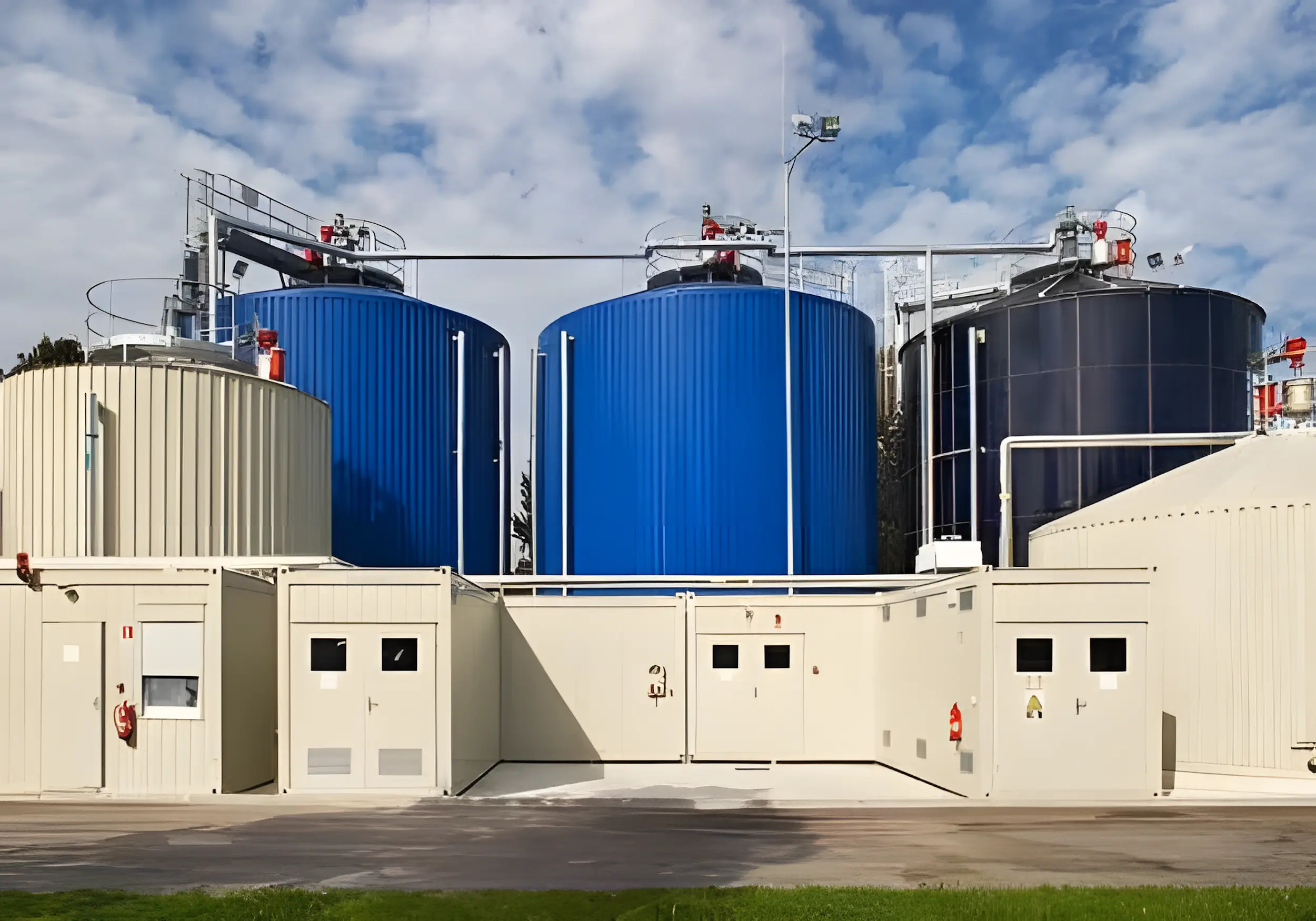
Harstad Wastewater Treatment Plant
A Compact and Innovative Solution for Urban Challenges
Harstad Wastewater Treatment Plant
In response to the space and efficiency demands of urban wastewater treatment, Inrigo delivered a compact, high-performance solution for Harstad Sør RA—serving approximately 8,200 inhabitants and processing both domestic wastewater and external sludge.
The facility required primary treatment, with a focus on removing suspended solids and reducing BOD₅ (biochemical oxygen demand). Conventional sedimentation would have required substantial land area—a challenge in an urban setting. Inrigo’s answer: a smart, space-saving design using rotating belt filters from Salsnes Filter, reducing the footprint by 90% compared to traditional methods.
Treatment Process Overview
- Inlet & Pre-treatment
Wastewater enters the plant through a pump station and is directed through mechanical step screens to remove coarse debris. - Coagulation & Flocculation
A cationic polymer is added to promote flocculation—causing fine particles to aggregate into larger flocs. - Filtration
The pre-treated water is filtered through rotating belt filters, which capture suspended solids while allowing clarified water to pass through. - Sludge Handling & Cleaning
Captured sludge is scraped from the filter mesh, which is automatically cleaned using high-pressure washing—ensuring consistent performance.
Performance Results
- >60% removal of suspended solids
- >50% reduction in BOD₅
- Significantly reduced space requirements (1/10th of conventional systems)
Advanced Sludge Treatment
Inrigo also engineered and delivered a high-efficiency sludge management system:
- Screw Press Dewatering
Achieves over 30% dry solids without polymer and up to ~40% with polymer, optimizing sludge volume and handling. - External Sludge Reception Unit
Dedicated system for receiving and processing septic and external sludge, including screening and preparation for dewatering.

Energy Efficient
Optimized systems that reduce energy consumption while maintaining peak performance.
Quality Assured
ISO certified processes ensuring quality, environmental responsibility, and safety standards.
Sustainable Design
Designed with sustainability principles to minimize environmental footprint and maximize resource recovery.
Ready to Start Your Project?
Our team of experts is ready to help you implement sustainable water and energy solutions tailored to your needs.
Similar Projects
Explore more of our successful implementations across different industries.

Oslo Municipal Water Treatment
Advanced filtration system providing clean water for the Oslo metropolitan area.
View Project
Harstad Wastewater Treatment
Compact wastewater solution designed for urban challenges in northern Norway.
View Project
Krogstad Biogas Plant
Sustainable solution for biogas production from agricultural waste.
View Project